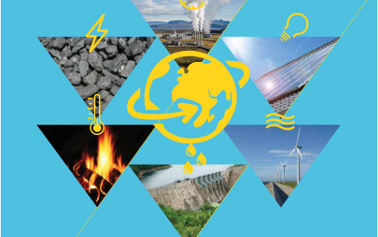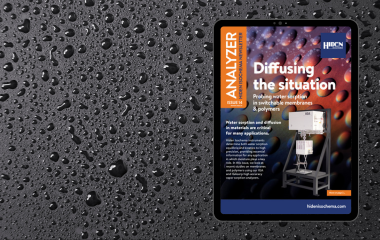Methane Adsorption by Shales
A new study focusing on the validated measurement of methane adsorption by shale under practical geological conditions has just been published in the American Chemical Society (ACS) journal Energy & Fuels.
This is an important topic due to the recent emergence of shale gas as a significant unconventional gas resource.
Professor Mark Thomas of Newcastle University in the UK, and co-workers at Durham University (UK) and Hiden Isochema, studied methane (CH4) adsorption in a dry, organic-rich Alum shale sample at pressures up to approximately 14 MPa, in the temperature range 300 – 473 K. The measurement of adsorption at these elevated pressures and temperatures is important, in order to assess the capacity of shales under practical conditions, since commercial gas shales are commonly located at a burial depth of 1 – 2 km, which corresponds to pressures in the range 10 – 20 MPa and temperatures between 40°C and 80°C (313 – 353 K).
The high pressure, above-ambient temperature methane adsorption data were complemented by adsorption measurements performed using nitrogen (N2) at 77 K, carbon dioxide (CO2) at 273 and 195 K, and methane at 112 K.
The high pressure excess methane adsorption data were measured on a Hiden Isochema Intelligent Manometric Instrument (IMI) at ten different temperatures, and thus allowed a detailed analysis of the adsorption behaviour as a function of both temperature and pressure. Additionally, carbon dioxide adsorption data up to 3 MPa were measured using the IMI, with the low pressure adsorption of nitrogen, carbon dioxide and methane determined using a Hiden Isochema Intelligent Gravimetric Analyzer (IGA).
The measurement of subcritical methane adsorption at 112 K was particularly useful because the absolute adsorption at this temperature, calculated assuming the adsorbed phase has the same density as liquid methane, represents an upper limit for adsorption.
At 273 K, the gravimetrically-determined carbon dioxide adsorption data, plotted as a function of relative pressure, agreed with the manometrically-determined carbon dioxide data in the overlapping regime, thus validating the data. This is important due to the low uptakes typically exhibited by shales, which make accurate sorption measurements more challenging than those performed on high surface area nanoporous materials, such as activated carbons, zeolites and metal-organic frameworks (MOFs).
In addition, the subcritical methane, carbon dioxide and nitrogen adsorption isotherms, plotted as a normalized molar uptake against relative pressure, also show good agreement, indicating that the use of carbon dioxide and nitrogen adsorption to characterize the pore volume of this particular shale is valid.
A number of models were then fitted to the high pressure methane adsorption data in order to parameterize the behaviour of the material. The fitting parameters from the best performing model, which used the Supercritical Dubinin-Radushkevich (SDR) equation, then allowed the prediction of the excess and absolute amounts of adsorbed methane for this particular shale as a function of geological depth.
Find out more by downloading the full article now from the ACS Energy & Fuels website:
Methane Adsorption on Shale under Simulated Geological Temperature and Pressure Conditions
Thomas F. T. Rexer, Michael J. Benham, Andrew C. Aplin, and K. Mark Thomas, Energy & Fuels, 2013, Article ASAP (As Soon As Publishable)
DOI: 10.1021/ef400381v
The study was supported by the GASH (Gas Shales in Europe) project, which is funded by Bayerngas, ExxonMobil, GdFSuez, Marathon, Repsol, Schlumberger, Statoil, Total, Vermilion and Wintershall.
If you would like to find out more about our instrumentation for the measurement of high pressure methane adsorption, please do not hesitate to contact us.


